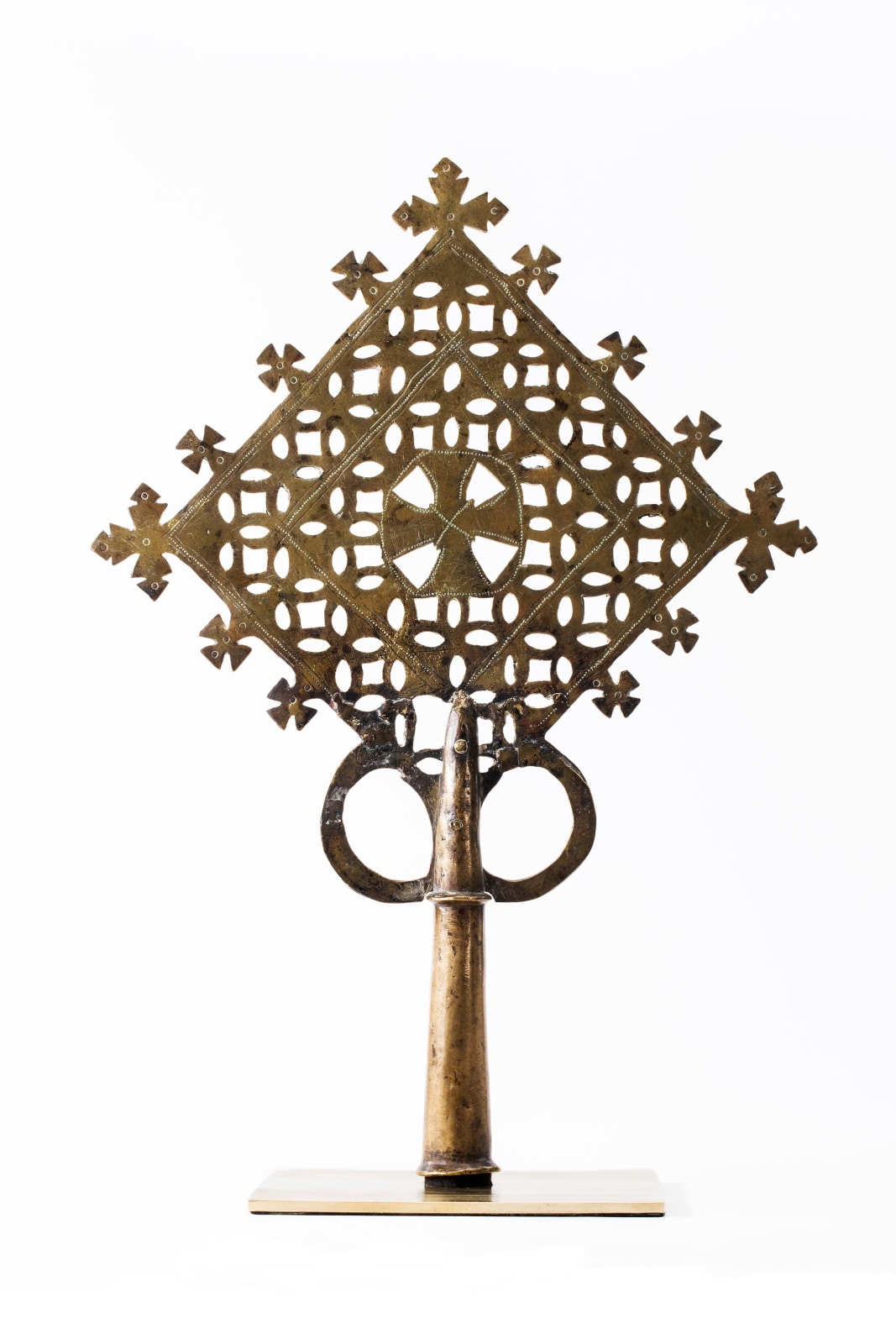Ethiopian Cross, circa 1900
Ethiopian crosses have a unique shape when compared with Egyptian Coptic crosses with arms that are broader compared to the slender arms of Egyptian crosses. They often feature elaborate designs, including intricate lattice patterns, geometric shapes, and symbolic motifs such as the Ethiopian cross motif or the Solomonic design, which are distinct to Ethiopian Christian art. Crosses from different regions of Ethiopia may feature distinct stylistic characteristics, with some displaying intricate filigree work and elaborate detailing, while others boast simpler, more geometric designs.
The history of Coptic metal crosses dates to the early centuries of Christianity in Egypt, where the Coptic Church flourished alongside the rise of monasticism in the desert regions. Initially crafted as sacred objects for religious worship, these crosses evolved over time to become symbols of Coptic Christian identity and faith. They often incorporate Christian symbols such as the cross itself, representations of the crucifixion of Jesus Christ, and the ankh, a symbol of life and eternity. These crosses are revered as symbols of Christian devotion and are commonly displayed in homes and used in religious ceremonies.
For a general introduction to Ethiopian crosses see the Bowers Museum, Santa Ana California. [1]
[1]https://www.bowers.org/index.php/collection/collection-blog/resurrected-aloft-processional-crosses-of-ethiopia

